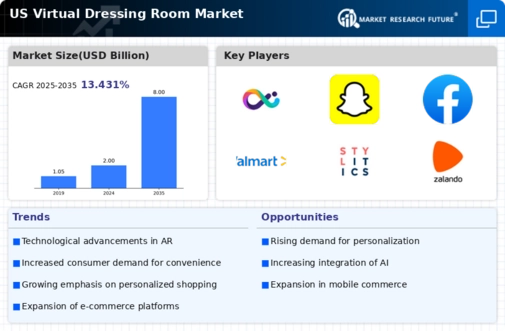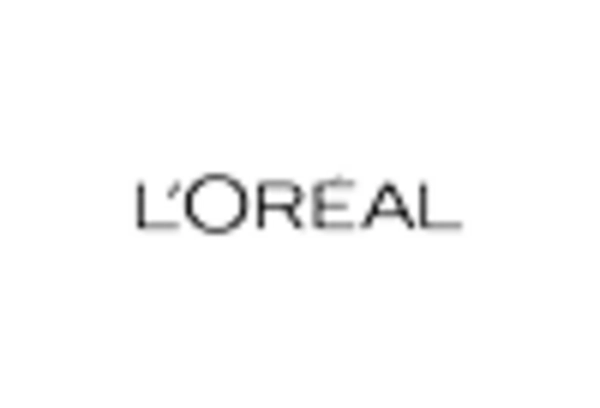Shift in Consumer Behavior
The virtual dressing-room market is being propelled by a notable shift in consumer behavior towards online shopping. As consumers increasingly prefer the convenience of e-commerce, the demand for virtual dressing rooms has risen. Data indicates that 60% of consumers express a desire for virtual try-on solutions to enhance their online shopping experience. This trend is particularly pronounced among younger demographics, who are more tech-savvy and open to using digital solutions. Retailers are responding by integrating virtual dressing rooms into their platforms, aiming to reduce return rates and improve customer satisfaction. The virtual dressing-room market is thus positioned to capitalize on this behavioral shift, with projections indicating a compound annual growth rate (CAGR) of 25% over the next five years.
Rise of E-commerce Platforms
The expansion of e-commerce platforms is a significant driver of the virtual dressing-room market. As online retail continues to grow, with e-commerce sales in the US reaching $1 trillion in 2025, the need for innovative solutions to enhance the online shopping experience becomes paramount. Virtual dressing rooms offer a unique solution, allowing consumers to visualize how clothing will fit and look before making a purchase. This capability is particularly appealing in a market where 30% of online purchases are returned due to sizing issues. By integrating virtual dressing rooms, e-commerce platforms can reduce return rates and increase customer satisfaction, thereby driving growth in the virtual dressing-room market. The synergy between e-commerce growth and virtual dressing-room technology is likely to shape the future of retail.
Technological Advancements in AR
The virtual dressing-room market is surging due to rapid advancements in augmented reality (AR) technology.. Innovations in AR technology enhance user experience by providing realistic simulations of clothing on virtual avatars. This has led to increased consumer engagement, with studies indicating that 70% of users are more likely to purchase clothing after using a virtual dressing room. The integration of machine learning algorithms further personalizes the shopping experience, making it more appealing. As retailers invest in these technologies, the virtual dressing-room market is projected to grow significantly, with estimates suggesting a market value of $10 billion by 2026. This growth is driven by the need for retailers to differentiate themselves in a competitive landscape, making technological advancements a crucial driver in the virtual dressing-room market.
Increased Focus on Customer Experience
The virtual dressing-room market is increasingly focused on enhancing customer experience.. Retailers recognize that providing an engaging and interactive shopping experience is essential for retaining customers. Virtual dressing rooms enhance this experience by allowing users to try on clothes virtually, which can lead to higher conversion rates. Research suggests that retailers who implement virtual dressing rooms see a 20% increase in sales. This focus on customer experience is not merely a trend but a strategic necessity in a competitive market. As businesses strive to create memorable shopping experiences, the virtual dressing-room market is likely to flourish, with investments in user-friendly interfaces and immersive technologies becoming commonplace.
Integration of Social Media and Influencer Marketing
The virtual dressing-room market is benefiting from the integration of social media and influencer marketing strategies. As consumers increasingly turn to social media for fashion inspiration, the ability to share virtual try-on experiences becomes a powerful marketing tool. Influencers can showcase how clothing fits in virtual dressing rooms, driving engagement and interest among their followers. This trend is particularly effective among younger consumers, who are more likely to trust recommendations from influencers. The virtual dressing-room market is thus positioned to leverage this synergy, with brands potentially seeing a 15% increase in sales when utilizing influencer partnerships. As social media continues to shape consumer behavior, the integration of these platforms with virtual dressing-room technology is likely to enhance market growth.

















Leave a Comment